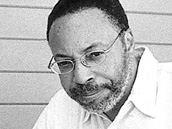Good Girls, Good Sex
By Dr. Sonya Sharma
Winnipeg, MB: Fernwood, 2011
122 pp. $18
Histories Haunt Us
By Trina Finlay
Gibsons, BC: Nightwood, 2010
80 pp. $18
In Good Girls, Good Sex, Dr. Sonya Sharma, Ph.D., questions 36 Protestant Christian women, both the churchgoing and the disenchanted, about how they combine faith and coupling, especially if they are unmarried. A researcher in theology and religion at Durham University, U.K., Sharma, herself a Christian, wonders how others – including Canadians – uphold teachings of chastity, celibacy, and fidelity, despite potential desires for lovers, before – and after – marriage.
Sharma does not describe these desires as lust. Rather, her subjects either yield to natural feelings (and feel shame) or agonize in trying to live up to difficult ideals. The true problem is, Sharma thinks, churches are too “either/orâ€: A woman is “good†(chaste and faithful); or she is “bad†(“loose†and wanton). She is either a virgin or a loyal wife; or she is Jezebel. For Sharma, these divisions support “patriarchy,†the rule of males (who are permitted greater license to “sinâ€), and oppress women by denying that they can still be good Believers even if they couple with others before – or outside of – marriage.
Sharma is clear: “good sex†is that in which “Christian women†experience guilt-free satisfaction, married or not. Just as the author avoids the word “lust,†so does she fail to quote a single Bible verse. Yet, it’s the Apostle Paul who declares death on “fornication†– not just a mad church or a crazed minister. Sharma seems to believe that religious arguments for chastity and marriage are just about men trying to make women feel bad.
Thus, she describes church-approved coitus as “marital-confined sexuality.†That word, “confined,†speaks volumes about her attitudes. She could have written “marriage-blessed sexuality,†but that phrase would have been too supportive of holy matrimony.
By not engaging The Bible itself (which is, like it or not, the root and pillar of Christianity), or talking about the reality of “lust†and its vast, commercial promotion in our society, Sharma weakens her argument. She seeks the emancipation of – or, rather, “good sex†for – Christian women. But she never discusses how this liberation would either contradict or confirm “revelation.â€
One other weakness is the relative lack of direct quotation from the women subjects. One is curious about exactly how they do negotiate the churchly divides between procreation and recreation, but too seldom do they speak in their own, dynamic terms. Instead, one has to wade through a lot of repetitious – if learned – drivel, only to learn that faith often conflicts with desires, and often, sadly, painfully. But what is to be done? Change the church? Quit the faith? Or invent a more likeable theology?
Oh – one last weakness in the book is the editing. “Your†is “You’re†(p. 33) and “altar†is “alter†(p. 40). The errors make sense, really. The book is fair sociology even if it’s foul theology.
Trina Finlay’s sophomore collection of poetry is Histories Haunt Us. Born in Melbourne, Australia, the poet grew up in Toronto, and now teaches English and Creative Writing at the University of New Brunswick, Fredericton.
Perhaps it is not coincidental that Finlay has studied at Mount Allison U., in Sackville, NB, for she is steeped in the work of its most famous poet-son, namely, John Thompson (1938-76). Certainly, her method is reminiscent of his ghazals, and the very first stanza of the very first one refers to the prematurely dead (due to alcoholism) poet: “Two hours from John Thompson’s cross / in Jolicure, two hours from a second storey.â€
Finlay holds a doctorate in English, yes, but popular culture intrigues her too: “Here’s to Tony Soprano—I’m catching up on the violence.†A prose poem seems to capture Sackville exactly: “In that town on the marsh with the school on the hill, poets who haunt first editions, stairwells. Whispered apocrypha. First the man with the red fleece sweatshirt who followed you on errands; the post office.â€
Yet, as much as Finlay borrows from Thompson, so does she make common cause with Margaret Atwood. Finlay also trusts irony and odd catalogues of things. She eavesdrops on existence itself. She is playful, but the play is dangerous: “desire for, desire for, desire for the story.†Do not resist. Try.
*These reviews first appeared in the Halifax Herald Chronicle.





No Comments so far ↓
There are no comments yet...Kick things off by filling out the form below.